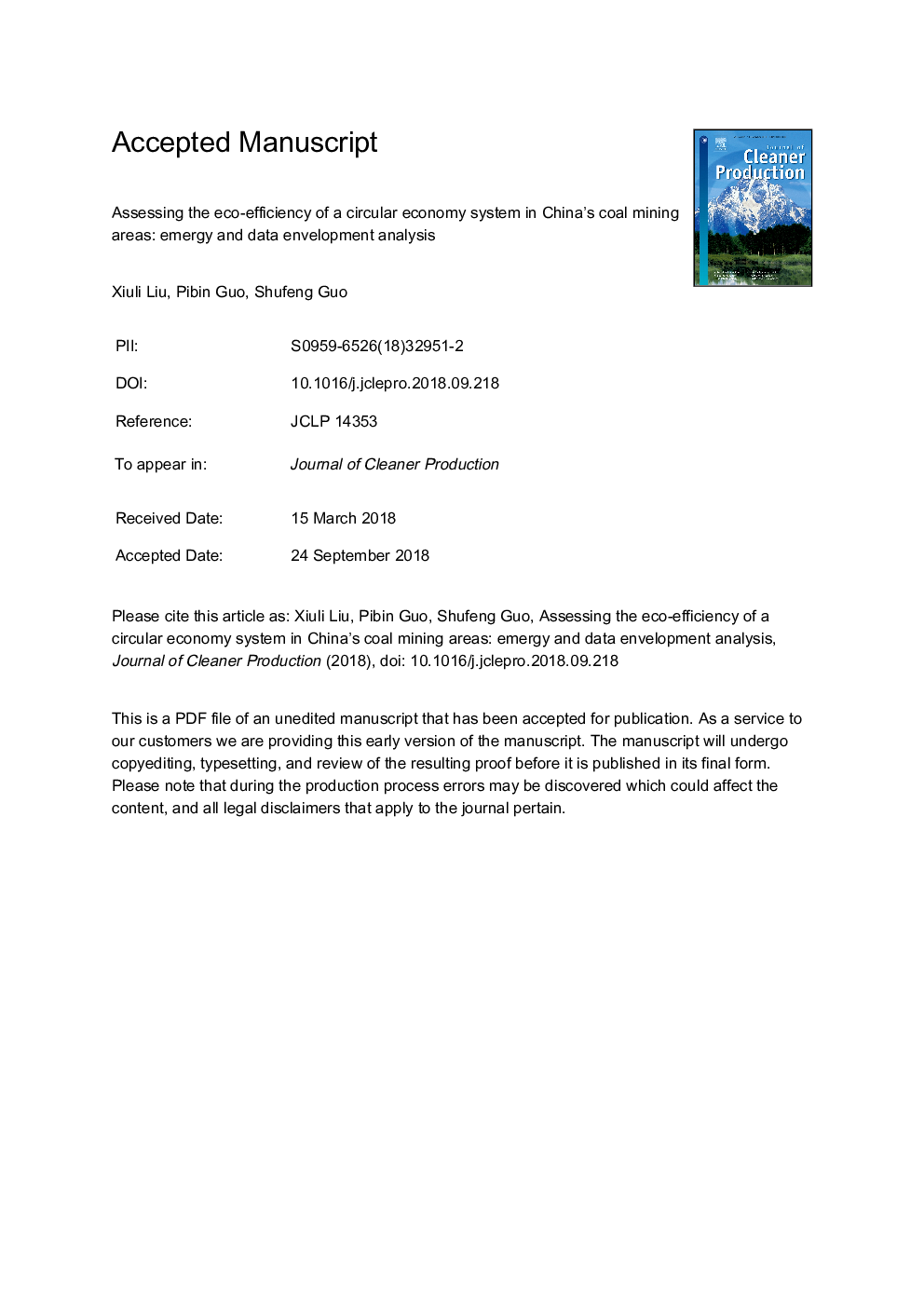| Article ID | Journal | Published Year | Pages | File Type |
|---|---|---|---|---|
| 11019840 | Journal of Cleaner Production | 2019 | 36 Pages |
Abstract
Improving the eco-efficiency of the circular economy system in mining areas has been recognized as the most effective way to reduce the greenhouse effect and achieve sustainable development. Based on the emergy theory and on data envelopment analysis (DEA), this paper adopts the SBM-Undesirable model to evaluate the eco-efficiency of the circular economy system in China's largest coal mining area, Shanxi Province, during the period 2006-2015. Emergy flow indices are treated as input and output indices. Eco-efficiency is factorized into economic efficiency and environmental efficiency. The potential for improvement of the circular economy system is analyzed based on input redundancy and output deficiency. The results for the period 2006-2015 indicate the following: (1) both the input and the output of the circular system increase during this period; (2) the increased input relies on mostly imported emergy, and the increase in waste emergy is lower than the exported emergy; (3) eco-efficiency is invalid except for 2011 and 2012 and exhibits a decreasing trend beginning in 2013; (4) environmental efficiency is invalid over the entire period, and the eco-efficiency level is positively related to the economic efficiency score; and (5) the circular economy system has a larger energy saving space, and the key to achieving sustainability of the circular economy system is output growth.
Related Topics
Physical Sciences and Engineering
Energy
Renewable Energy, Sustainability and the Environment
Authors
Xiuli Liu, Pibin Guo, Shufeng Guo,
